Emergency HVAC Thorne
Top After Hours HVAC in Thorne
Get up to 3 Emergency AC Repair quotes for your project today! Compare profiles, reviews, accreditations, portfolio, etc... and choose the best service.
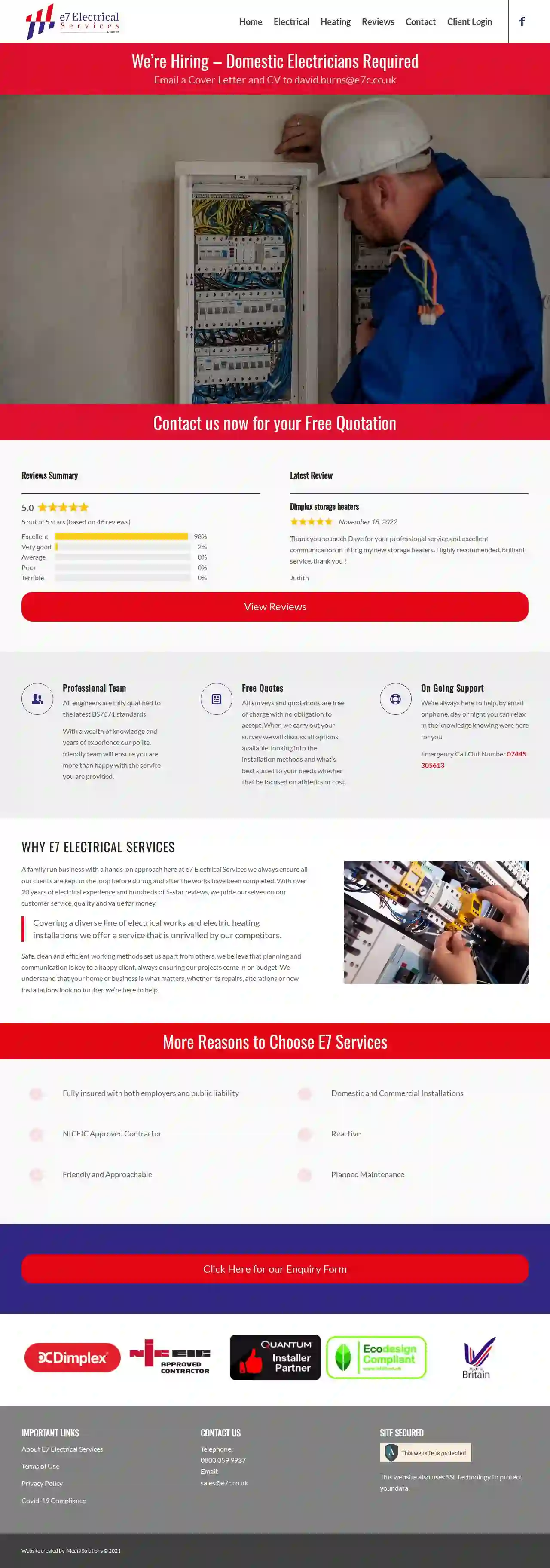
The Economy 7 Company
54 reviews1 Watervole Way, Apex Office Space, Doncaster, DN4 5JP, GBE7 Electrical Services is a family run business with over 20 years of electrical experience. We pride ourselves on our customer service, quality and value for money. We offer a wide range of electrical works and electric heating installations, and our team of fully qualified electricians are always happy to help. We understand that your home or business is what matters, whether it's repairs, alterations or new installations, we're here to help. Our approach is not your typical salesman approach, we pride ourselves on making sure your survey is carried out by a qualified electrician and not a salesperson on commission. We're fully insured with both employers and public liability, and we're NICEIC Approved Contractors. We're friendly and approachable, and we're always here to help, by email or phone, day or night. You can relax in the knowledge knowing we're here for you.
- Services
- Why Us?
- Accreditations
- Our Team
- Testimonials
- Gallery
Get Quote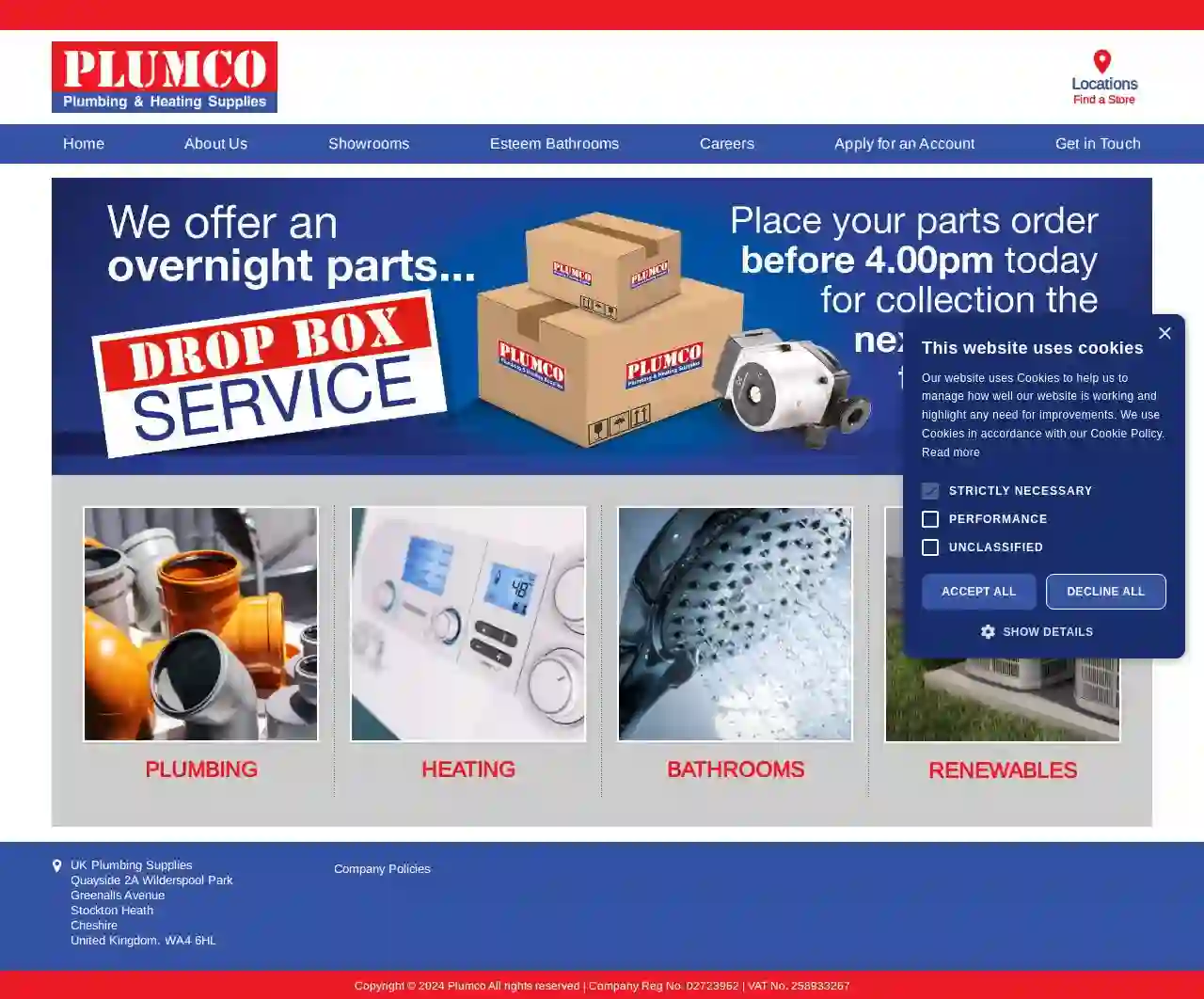
Plumco Doncaster
44 reviewsQuayside 2A Wilderspool Park, Greenalls Avenue, Stockton Heath, GBPlumco operates under a highly decentralised business model, allowing our experienced local teams to be the primary decision makers for our customers. Such a structure ensures that individual customer requirements are met with a first-class service. Our national infrastructure supports these efforts, enabling us to provide a consistent service throughout the UK. We are committed to maintaining extensive stock local to the customer's needs enabling us to offer the UK’s top brands ready for same-day delivery or collection. Our inventory also boasts a vast range of boiler spares, provided through our own central distribution, guaranteeing next-day availability for over 20,000 items. Whether you are a small or large customer, our aim is to provide you with the very best of service and ensure you come back time and time again. We are the largest independent plumbers' merchants in South Yorkshire. Founded in September 2000, Plumco have built a reputation based on excellent customer service, large stocks & competitive prices supplying both Trade & DIY customers. Our dedicated team have been providing a first class service to the local market for many years and have the resource of the wider UK Plumbing Supplies business for deliveries across the UK.
- Services
- Why Us?
- Gallery
Get Quote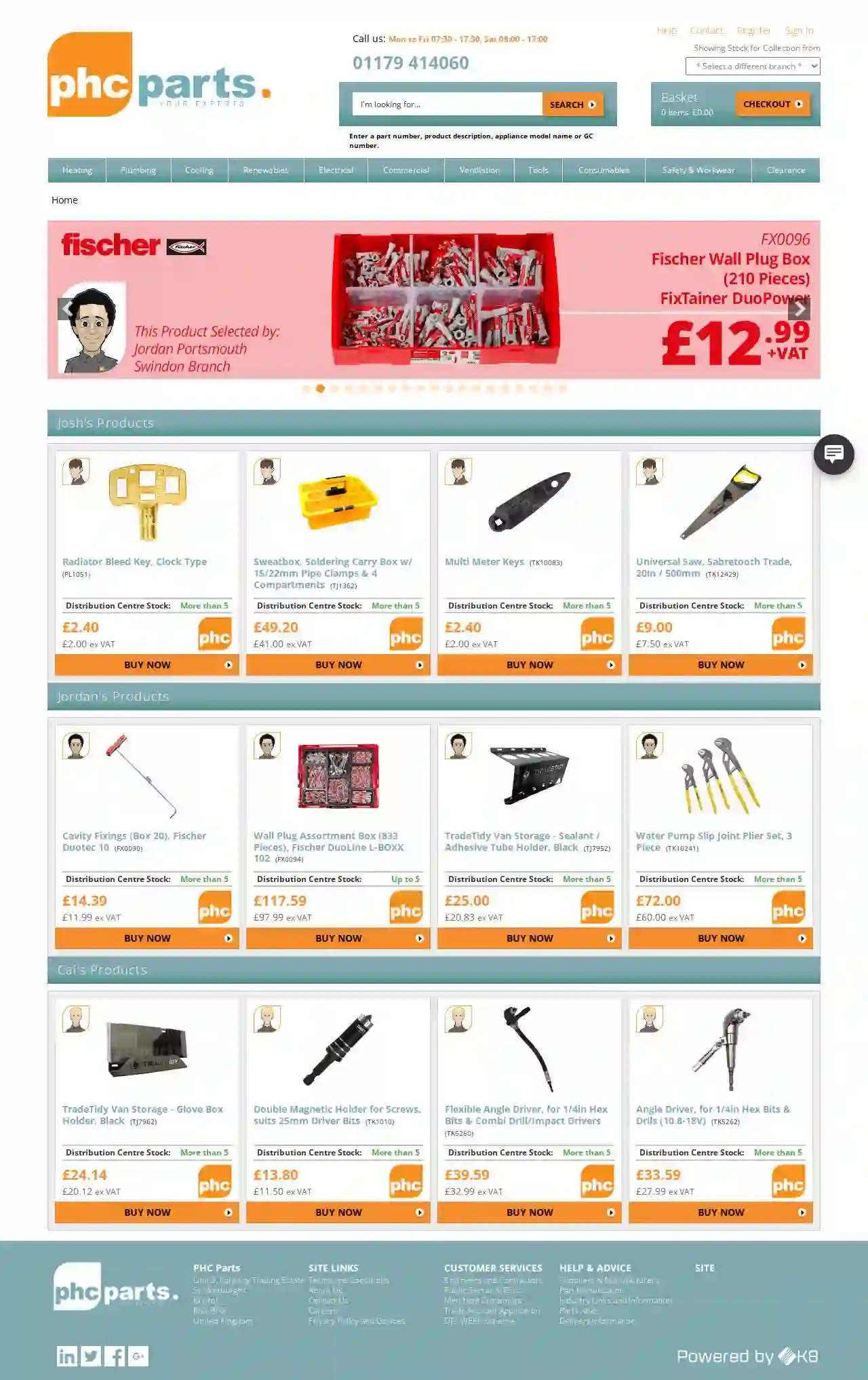
PHC Parts
52 reviewsUnit 3, Parkway Trading Estate, Bristol, BS2 9PG, GBPowred Heating Components is a leading supplier of heating spares and components. We offer a wide range of products from top brands, including Baxi, Glow-worm, Ideal, Vaillant, and Worcester Bosch. Our extensive inventory includes boiler spares, radiator valves, pumps, and pressurisation units, as well as underfloor heating and solid fuel stove parts. We also provide a variety of plumbing and electrical products, including copper tube and fittings, brassware, and electrical heating appliances. With a strong focus on customer service, we aim to provide fast and reliable delivery, competitive pricing, and expert advice to help you find the right products for your needs.
- Services
- Why Us?
- Accreditations
- Gallery
Get Quote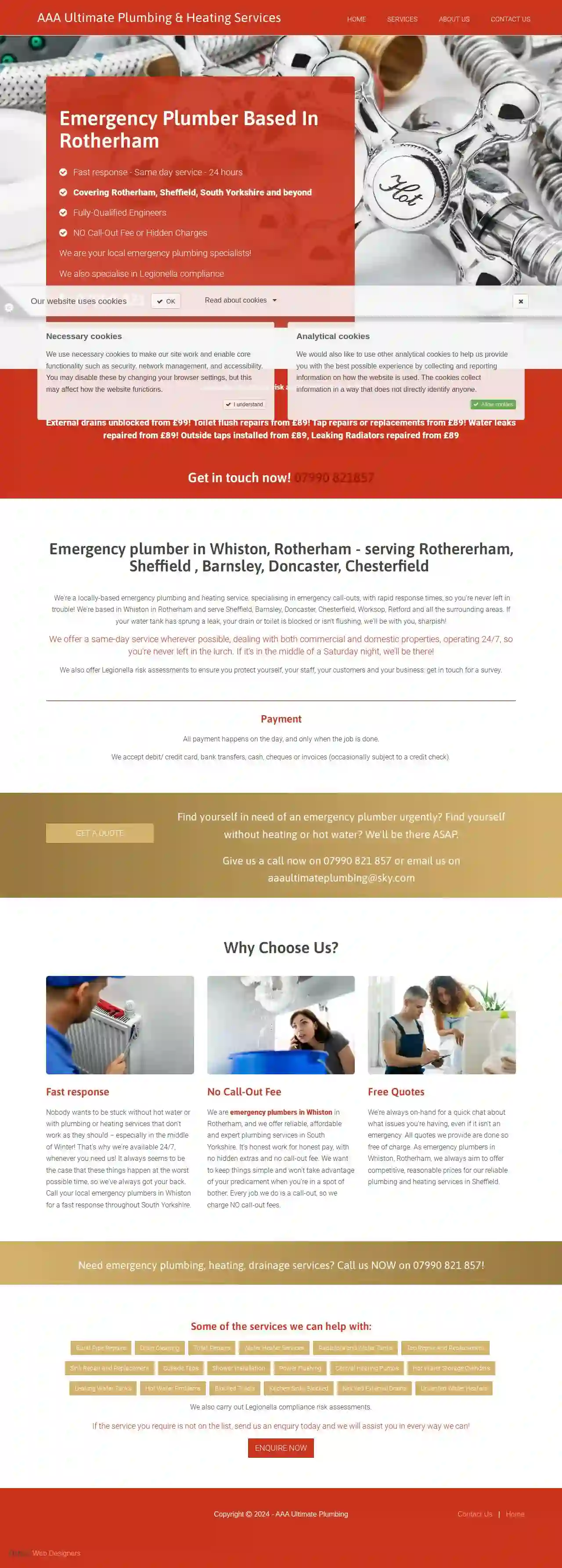
AAA Ultimate Plumbing & Heating
41 reviews17 Bent Lathes Avenue, Whiston, S60 4BL, GBAAA Ultimate Plumbing is a team of fully qualified plumbers based in Whiston, South Yorkshire, with over 20 years of combined experience in the trade. We are dedicated to providing reliable and affordable plumbing and heating services to both domestic and commercial properties throughout South Yorkshire. Our team of hard-working and well-trained engineers are passionate about resolving our customers' plumbing needs efficiently and effectively. We pride ourselves on our rapid response times, offering a 24/7 service with same-day appointments whenever possible. We cover a wide area including Sheffield, Rotherham, Barnsley, Doncaster, Chesterfield, Worksop, Retford and surrounding areas. We offer a mobile service and are always on call to assist with any plumbing emergencies. At AAA Ultimate Plumbing, we believe in transparent pricing with no hidden charges or call-out fees. We accept various payment methods, including debit/credit cards, bank transfers, cash, cheques, and invoices.
- Services
- Why Us?
- Gallery
Get Quote
Kenberne Electrical Ltd
4.1171 reviews194 Sandringham Road, Doncaster, DN2 5JE, GBKenberne Holdings Ltd is a leading appliance retailer based in Doncaster, South Yorkshire. We offer a wide range of products from top brands, including washing machines, tumble dryers, refrigeration, dishwashers, cooking, and floor care. Our team is dedicated to providing excellent customer service and support. We are committed to delivering high-quality products and services to our customers. With over 150 Google reviews and a price match promise, we are confident in our ability to meet your needs. Contact us today to learn more about our products and services.
- Services
- Why Us?
- Gallery
Get Quote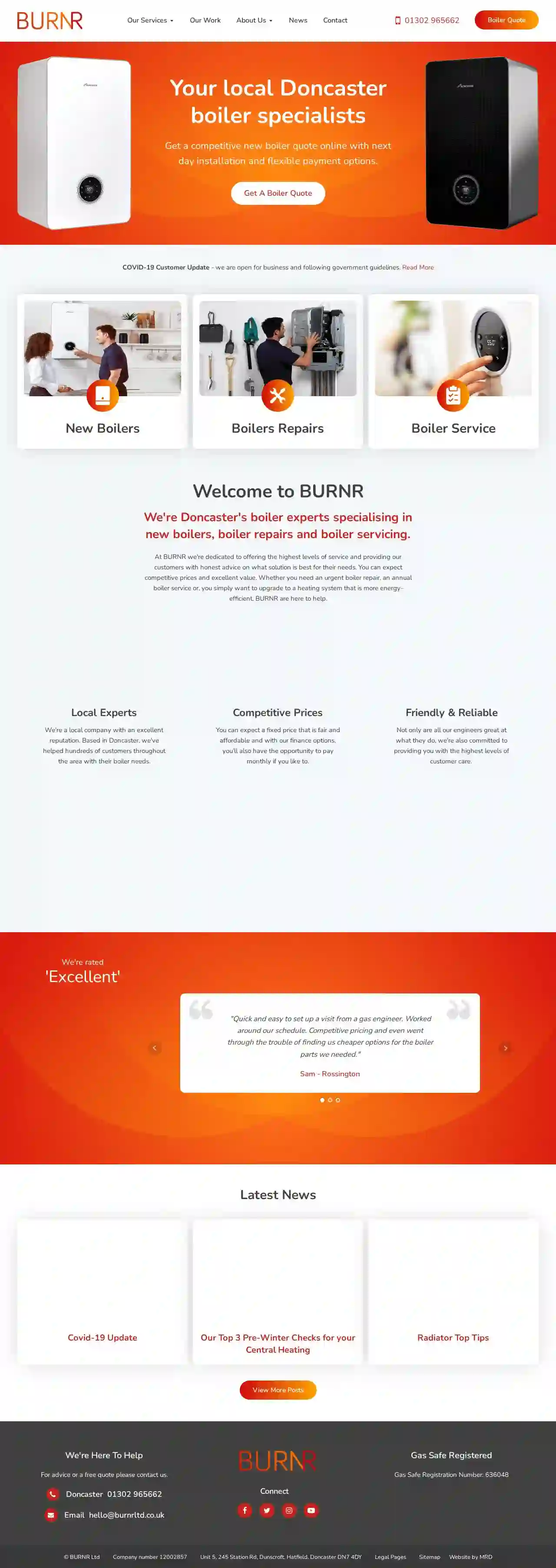
BURNR Ltd
3.614 reviewsUnit 5, 245 Station Rd, Dunscroft, Hatfield, Doncaster, DN7 4DY, GBWelcome to BURNR, Doncaster's leading boiler specialists. We're dedicated to providing top-notch service and honest advice to help you find the perfect solution for your boiler needs. Whether you require an urgent repair, a routine service, or a brand new energy-efficient system, our team of experts is here to assist you. At BURNR, we pride ourselves on our local expertise, competitive pricing, and commitment to customer satisfaction. We offer fixed prices, flexible payment options, and extended warranties across leading boiler manufacturers. Our team of highly skilled engineers is not only proficient in their craft but also dedicated to providing exceptional customer care. We're committed to working around your schedule and ensuring a smooth, hassle-free experience. Choose BURNR for all your boiler needs and experience the difference of working with a trusted local expert.
- Services
- Why Us?
- Accreditations
- Testimonials
- Gallery
Get Quote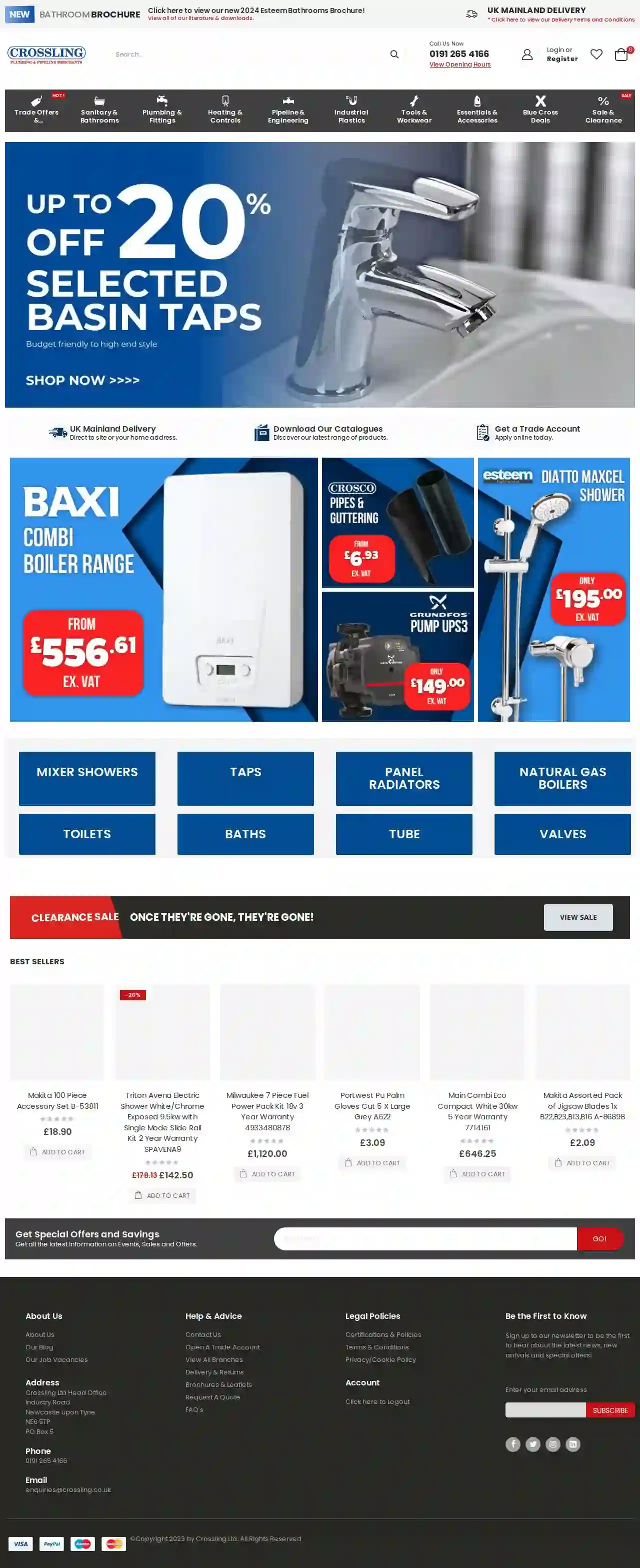
Crossling Ltd. - DONCASTER BRANCH CLOSED FROM 5TH OF OCTOBER 2023
51 reviewsCrossling Ltd Head Office, PO Box 5, Industry Road, Newcastle upon Tyne, NE6 5TP, GBCrossling is a leading supplier of plumbing, heating, and bathroom products in the UK. With a wide range of high-quality products from top brands, we cater to both trade professionals and DIY enthusiasts. Our extensive selection includes everything from baths and toilets to boilers and radiators, ensuring you find the perfect solution for your needs. We pride ourselves on offering competitive prices, exceptional customer service, and fast delivery. Whether you're renovating your bathroom, upgrading your heating system, or tackling a plumbing project, Crossling is your one-stop shop for all your building needs.
- Services
- Why Us?
- Accreditations
- Gallery
Get Quote
Mr Pipes Ltd
55 reviewsUnit 4, Atlas Office Park, Doncaster, DN4 5JT, GBEstablished in 2009, Mr Pipes key focus values are quality, honesty and trust. We don't rely on third party websites to advertise our services and products as we work primarily via word of mouth. We are GasSafe Registered for natural gas & LPG. G3 registered which means that we can work on all types of domestic hot water cylinders. “Hi there! I’m Mathew, here to help you with all your boiler and heating problems. – Please give us a call – we would only be happy to help!”
- Services
- Why Us?
- Our Team
- Gallery
Get Quote
Project Heating Solutions
3.940 reviewsDoncaster, GBProject Heating Solutions is a UK-based company that specializes in providing cutting-edge heating technology to homes throughout the UK. With over 30 years of experience in the mechanical, electrical, and heating industries, our commitment to providing the best product and service before, during, and after an installation is second to none. We offer comprehensive renewable energy solutions to homes, including air source heat pumps, solar panels, batteries, and boilers. Our team of experts is dedicated to helping homeowners reduce their energy bills and carbon footprint while keeping their homes warm and cozy all year round.
- Services
- Why Us?
- Gallery
Get Quote
Ferrob Ventilation Limited
Cameron Court, Northwich, CW8 4DU, GBBP Hub Support: 01606 784567 [email protected] Thinkprint UK, Cameron Court, Northwich, Cheshire, CW8 4DU. Registered in UK no: 03418318 / Company VAT no: 674 6367 96 For full details of our refund policy please CLICK HERE Currencies Accpeted: GBP
- Services
- Why Us?
- Gallery
Get Quote
Over 12,692+ HVAC Businesses on our directory
Our HVAC companies operate in Thorne and surrounding areas!
HVACCompaniesHub has curated and vetted the Best HVAC Contractors arround Thorne. Find the most trustworthy pro today.
Frequently Asked Questions About Emergency HVAC Services
- Lower Your Thermostat: Set your thermostat to a lower temperature when you are away or asleep. Programmable thermostats automate this process, helping you save money.
- Seal Air Leaks: Seal gaps and cracks around windows, doors, and other openings to prevent heat loss.
- Improve Insulation: Make sure your home is properly insulated.
- Annual Furnace Maintenance: Keep your furnace running efficiently with annual inspections and tune-ups.
- Use Window Coverings: Close curtains or blinds at night to retain heat.
- Raise Your Thermostat: Set your thermostat to a higher temperature when you’re away. Consider using a programmable or smart thermostat.
- Use Fans: Fans can circulate air and make you feel cooler, allowing you to raise the thermostat a few degrees.
- Close Window Coverings: Keep curtains or blinds closed during the day to block out sunlight.
- Limit Heat-Generating Activities: Avoid running heat-producing appliances (ovens, dryers) during the hottest parts of the day.
- Annual AC Maintenance: Schedule yearly maintenance for your air conditioner to ensure it's running efficiently.
- Plant Shade Trees: Planting trees around your home can provide natural shade and reduce heat gain.
- Improve Energy Efficiency
- Extend System Lifespan
- Prevent Costly Repairs
- Enhance Indoor Air Quality
- Identify Potential Problems Early
- Ensure Safe and Reliable Operation
What is the best way to heat my home efficiently?
How long does it take for an emergency HVAC technician to arrive?
How can I cool my home efficiently?
What are the benefits of a preventative HVAC maintenance plan?
What is the best way to heat my home efficiently?
- Lower Your Thermostat: Set your thermostat to a lower temperature when you are away or asleep. Programmable thermostats automate this process, helping you save money.
- Seal Air Leaks: Seal gaps and cracks around windows, doors, and other openings to prevent heat loss.
- Improve Insulation: Make sure your home is properly insulated.
- Annual Furnace Maintenance: Keep your furnace running efficiently with annual inspections and tune-ups.
- Use Window Coverings: Close curtains or blinds at night to retain heat.
How long does it take for an emergency HVAC technician to arrive?
How can I cool my home efficiently?
- Raise Your Thermostat: Set your thermostat to a higher temperature when you’re away. Consider using a programmable or smart thermostat.
- Use Fans: Fans can circulate air and make you feel cooler, even at a higher thermostat setting.
- Close Window Coverings: Keep curtains or blinds closed during the day to block out sunlight.
- Limit Heat-Generating Activities: Avoid running heat-producing appliances (ovens, dryers) during the hottest parts of the day.
- Annual AC Maintenance: Schedule yearly maintenance for your air conditioner to ensure it's running efficiently.
- Plant Shade Trees: Planting trees around your home can provide natural shade and reduce heat gain.
What are the benefits of a preventative HVAC maintenance plan?
- Improve Energy Efficiency
- Extend System Lifespan
- Prevent Costly Repairs
- Enhance Indoor Air Quality
- Identify Potential Problems Early
- Ensure System Reliability